The Miami Grand Prix, Fake Marina and All, Was a True Super Bowl-Like Event
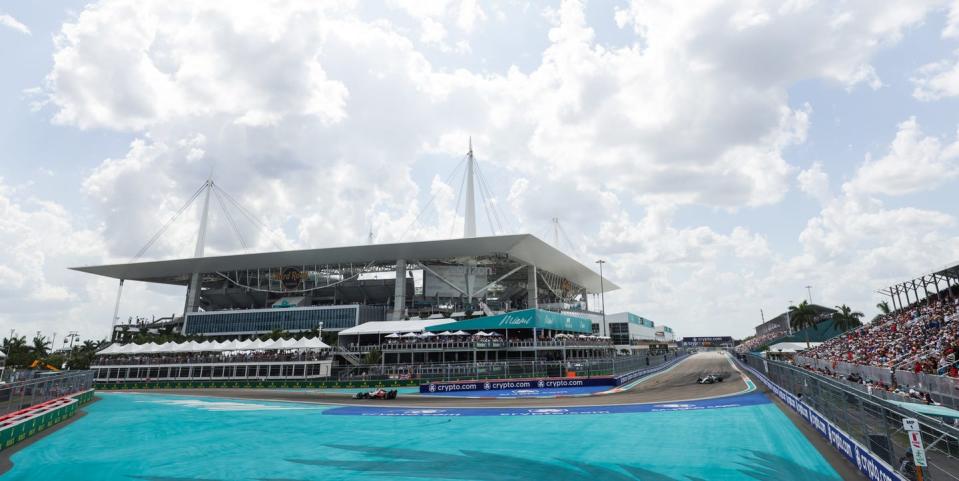
When adding a second Formula 1 race in the U.S., Liberty Media had just about any city and track in the country available to them. It ignored every pre-existing opportunity to zero in on a temporary track built around a parking lot in Miami.
From a racing fan's perspective, it is an obviously bad choice in the country that still races open wheelers at tracks like Road America, Watkins Glen, and Laguna Seca every year. It's not necessarily one of the country's signature cities, either; If you go down the list of American metro areas by population, Miami comes in behind Will Smith's less secret first home of Philadelphia at just eighth. No, F1 came here because the entire city markets itself the same way Formula 1 does: As an ambitious luxury product worth traveling from anywhere in the world to see.
Like Monaco, Miami is on the F1 calendar for the glamour. Or at least for the glitz. Liberty knew that Miami was a city its most exclusive guests would happily travel to, but, more than that, they knew it was a city its most powerful sponsors would happily leverage for the promotional opportunities that make sponsoring F1 a viable business model. That made the first draft of the GP a Super Bowl-like event, not in significance but in opportunity for corporate partners to show their very best to their very best clients. That meant the influence of the weekend went well beyond the Miami Gardens track, but don't miss the track's part in this. Miami is built on competing exclusivity, perhaps the core feature of the circuit.
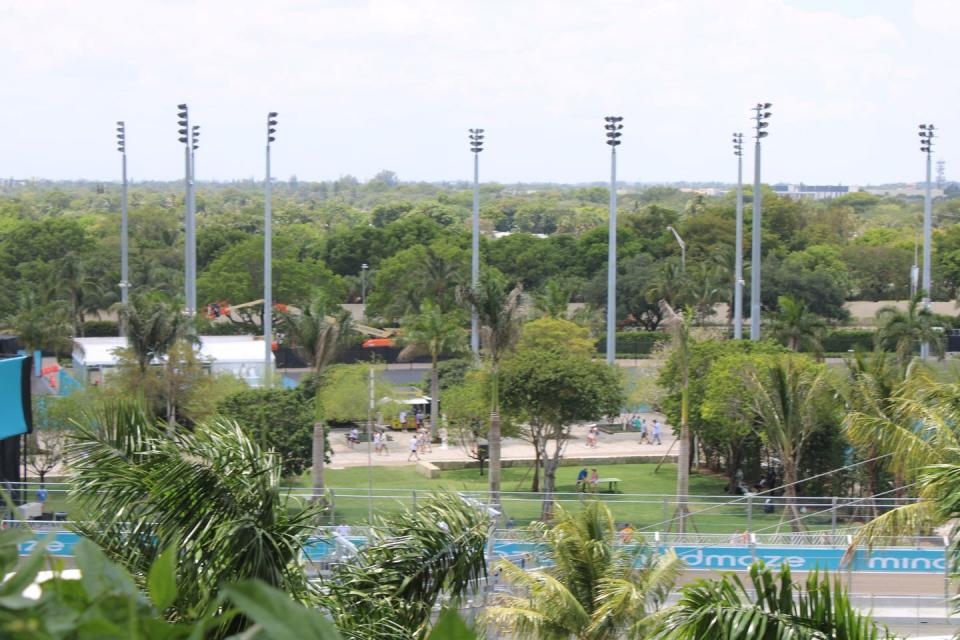
The Miami International Autodrome, the official name of the semi-temporary circuit designed to be deconstructed and rebuilt every year around the Hard Rock Stadium in Miami Gardens, is all about bringing that exclusivity to every corner of a track.
The Autodrome is not only built around luxury experiences, it's built around a wide variety of competing luxury experiences. The Paddock Club is the heart of it all, a $13,000-a-ticket experience that drew surprisingly negative reviews. Then there's individual team hospitality structures scattered throughout the track, including the Red Bull hospitality section I attended with Acura.
Then you have Hard Rock's temporary beach in turns 11, 12, and 13, complete with mermaids in pools and elevated cabanas watching over what turned out to be the most difficult corners of the track. Grandstands are scattered throughout, of course, including those with an optimal view of pre-race activities like concerts and Martin Brundle's now-traditional celebrity mistake. All of these things give different sorts of fans, customers, and clients a unique experience they can tell people scattered in other corners of the track is in whatever way superior to what they were offered. Only one section has a convincing argument that their experience is one-of-a-kind, though: the marina.
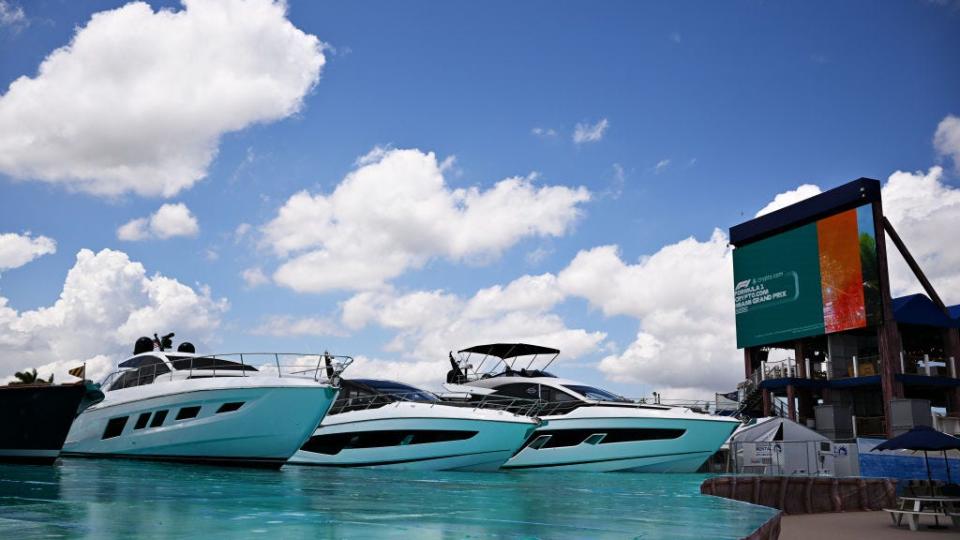
The inaugural Miami Grand Prix will be remembered as the race with the fake water. Not the race with the sellout crowd, not the most-talked-about day in F1's history in America, not even the race where Max Verstappen wore a football helmet on the podium. If you build one fake marina with painted water for dry-docked boats in the middle of a corner, you've branded yourself as the race with the fake water.
The absurdity of it all was a joke online, but on the ground it was a source of pure joy. There's a novelty to it in person, the place being so shamelessly fake that you knew even the wealthiest clients had to be in on the joke. At an event where the main sense is that everyone is trying to impress everyone else, the concrete marina felt like some of the most genuine fun available. There are boats, the boats are parked in a parking lot, and F1 cars are going around that parking lot. It's not Monaco, but it's a good time.
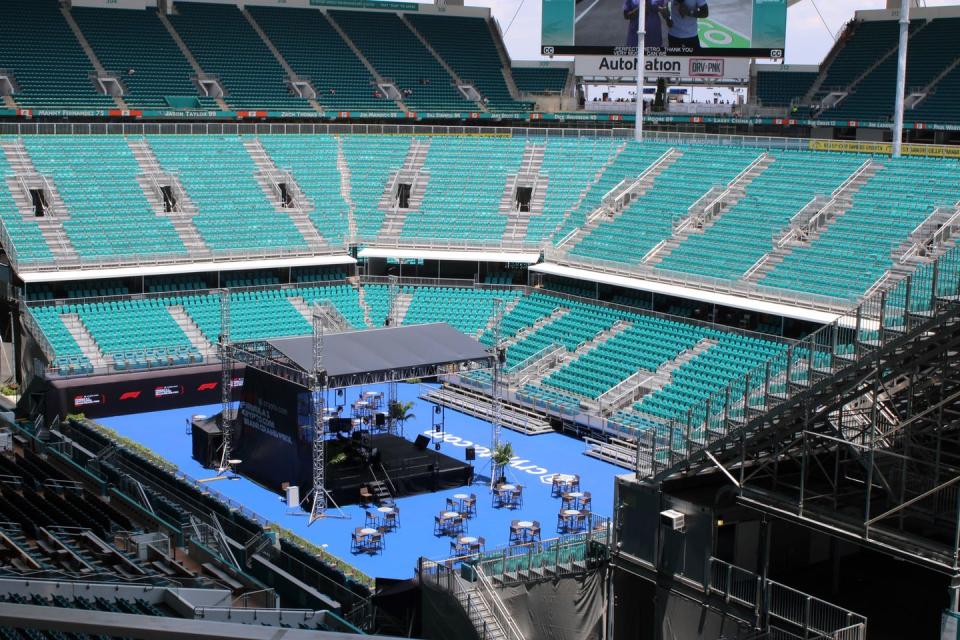
The dominating feature of the Miami Autodrome is the thing this parking lot was actually built for, the Hard Rock Stadium. The massive canopy built over the stadium in 2015 hides what is underneath a 1980s concrete relic, the sort of stadium NFL teams all around the country have used as leverage to force their host cities into paying a significant amount of money to replace.
You see this canopy from just about everywhere on the track, the lone massive structure in an otherwise-flat area bound on two ends by the actual Florida turnpike. Inside, the stadium was converted into something like the world's biggest live recording stage. Dan Marino's retired number remained visible along the venue's top ring. It's a glaring reminder: Here, this weekend, Formula 1 is bigger than football in an NFL city.
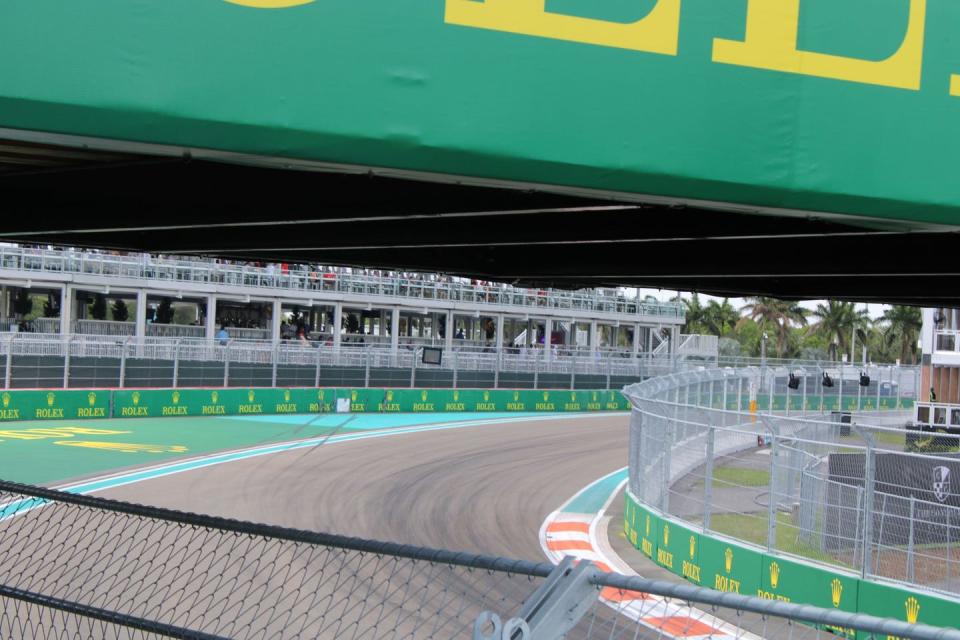
The track itself was decidedly less special. The generic layout around a mostly-flat surface was highlighted only by turns 11 through 16, a complex made unique mostly in how poorly it flowed together. Turn 11, a great passing opportunity after the track's most significant DRS zone, was difficult because it fed into the sweeping turn 12.
Turn 12 was made difficult because its awkward shape fed cars into the 14-15 chicane at an odd angle. That chicane was made difficult by how far the turtle curbs protecting the runoff areas jutted into the air. All of these are easy places to make mistakes, but nothing around the track is in the league of a single corner at Monza. If the layout is abandoned entirely for a wholly new temporary design, it would not notably change how the event operates.
The energy in the sold-out grandstands on race day was incredible, particularly whenever Sergio Perez or Daniel Ricciardo gave a loyal crowd a reason to cheer. Drive to Survive made an odd class of fans, one that led F1 to put banners for team principals around the track as they traditionally do for drivers, but the audience certainly loves F1 as we know it. Unfortunately, the race gave few reasons to cheer. Once Max Verstappen got within DRS range of Charles Leclerc and took the lead, almost all of the drama in the field was in a battle for eighth on track. Far from a classic race at far from a classic track.
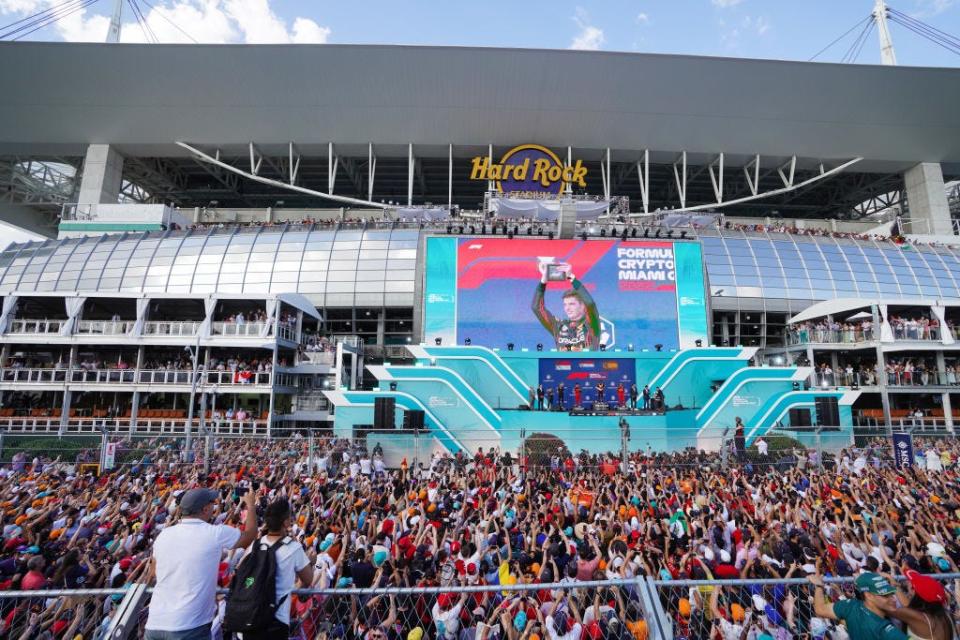
What will be remembered is the event. The crowd was bigger at COTA, sure, but this weekend was America's biggest F1 day to date. ESPN sent a camera crew to report from the site all weekend long across its channels. More than that, though, the event actually succeeded in taking over a city as large as Miami. Every night in Miami Beach, the street parked Cullinans and Uruses sat under banners featuring Daniel Ricciardo and Max Verstappen, in front of venues that would rather seat them than anyone but only-in-Miami A-listers DJ Khaled and Pitbull. If you're an American fan who started watching F1 any time before 2018, all of it seems unimaginable. But the real test comes next.
In 2023, we're doing this all over again. Not just at Miami, where this race is set to continue for at least nine more years. Not just at COTA, where a somewhat more accessible USGP is set to continue. Both will be outdone by a new race in Las Vegas. The glamour of an inaugural event has moved on to the only more famous American party city, where just one season later all of the same parties will be tasked with mustering an even higher level of luxury, exclusivity, and prestige around an event held on yet another temporary track. If this is a bubble, I would bet that Miami was the peak and Las Vegas would be the wake-up call that we cannot sustain it. If America's love affair with F1 is here to stay, it's just the beginning.

 Yahoo Autos
Yahoo Autos 